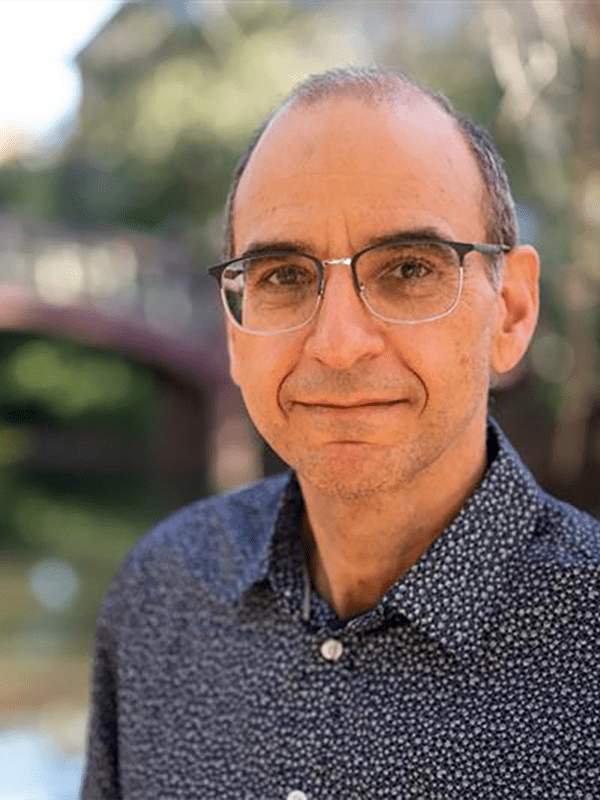Drive-Thru Pedagogy Blog
Pick up something practical.
Virtual Reality for Student Engagement
July 8, 2024 • Mike Blum
“Whoa!”
That’s the sound I love to hear in the classroom. And I hear it every time I partner with an instructor on a virtual reality exploration in one of their courses. Students put on their VR headsets and are immediately transported to the Parthenon or Red Square, or a Buddhist temple in India, or under the sea exploring a coral reef. STLI is continuing its partnership with instructors to bring VR opportunities into the classroom, and we’re working to get past the “whoa!” of student engagement and into the “wow!” of transformative learning.
SAMR is the acronym for one model describing technology integration in the classroom, and it identifies the 4 stages of technology use in education (see image below).

At its simplest level, SAMR describes how a tool used in a class might enhance learning or transform it. VR certainly has the potential to transform learning, but how is it being used at William & Mary today, and how might you use it in your own courses?
Currently, the Humanities and Social Sciences are our most frequent users of VR technology. They’re using the headsets to bring students on virtual field trips around the world, so let’s use this as our primary example.
- Substitution: At the Substitution level, technology is a direct substitute for something you might already be doing in class, with no functional change. In this case, the VR headset might be used as a 2D viewing screen for normal YouTube videos or standard images. Nobody I’m currently working with is using it at this level.
- Augmentation: At the Augmentation level, technology is used as a direct substitute with functional improvement. Faculty members are introducing 360 video from apps like YouTube 360 and 360 images from apps like Google Street View and the Wander app for Meta to allow students to explore their surroundings in an immersive environment not otherwise possible in the classroom. Professor Jess Paga, for example, is able to place students virtually in the center of the Parthenon, where they get a sense of space and distances. Here, immersion is the augmentation, and this is where most of the VR work at W&M is currently happening.
- Modification: At the Modification level, the technology allows for significant task redesign. An example of this is happening in our Russian Studies program both in our domestic courses and in our study abroad program. Here at home, Professor Bella Ginzbursky-Blum can invite students into a Russian village hut with costumed interpreters performing cultural tasks, while in our study abroad program in Vilnius, Lithuania, Professor Sasha Prokhorov’s students have created their own 360 video presentations in situ and then made those presentations available to students at William & Mary for immersive exploration before their own study abroad trips.
- Redefinition: This is the highest level on the SAMR chart, where the technology allows for the creation of new tasks previously inconceivable. This is the area I’m currently developing with virtual exhibitions, in which students will be able to construct their own virtual environments as learning objects for other students to explore. A future project that showcases Redefinition is a VR model of the Acropolis using the Kuula app where students would be able to create a reconstruction of the Parthenon and other buildings in the Acropolis, embed videos and images, and create annotated guides for immersive visits.
There are so many exciting opportunities for instructors and students at every level of exploration. From our initial surveys, students who have used the VR headsets in their classes overwhelmingly felt it was a good use of class time and wanted to see more classes incorporate this immersive technology into their lessons. Want to know more? Interested in incorporating a VR lesson into your own course? Contact me at mxblum@wm.edu to get started.
References:
Puentedura, R. (2010). SAMR and TPCK: Intro to advanced practice. http://hippasus.com/resources/sweden2010/SAMR_TPCK_IntroToAdvancedPractice.pdf
© 2024 Mike Blum. The text of this work is licensed under a Creative Commons BY-NC-ND 4.0 International License.
Meet the Author
Mike Blum
Assistant Director for Faculty Engagement
Mike serves as Assistant Director at The Studio for Teaching & Learning Innovation. With academic experiences spanning the humanities and educational technology, Mike works at the intersection of academic storytelling and multimodal communication.
